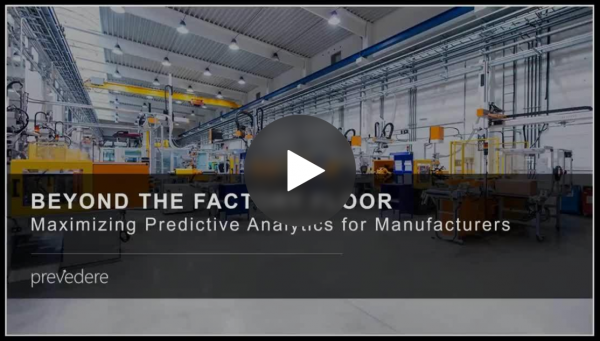Last Updated: October 25, 2021
For manufacturers, demand planning is a tightrope walk. Even slight under projections can tip toward supply shortages, weaving a path of unsatisfied distributors, retailers, and consumers. Yet over projections waste time, resources and eat into profits. The stakes for manufacturing companies to create accurate demand planning are high, but the challenge is expansive. Manufacturers must accurately predict demand, but must do so, in most cases, without a clear line of sight into end consumers.
Manufacturers, being several degrees removed from end consumers in the supply chain, are at a disadvantage compared to retailers and even distributors. Answers to questions like the following are often unclear:
- What prompted a recent order swing?
- Are week-to-week fluctuations in orders a result of temporary inventory adjustments?
- Are recent demand changes foretelling a sustained shift in demand?
- Will seasonal volatility correct itself?
- Or is it an indication of a bigger change?
The answers cannot be found just by analyzing historical sales and projecting these trends in the future, as this would assume an unchanging market environment. Instead, manufacturers must rely on understanding how external forces, such as consumer sentiment, spending power, and exchange rates impact business. With today’s technology, however, the power to integrate such external factors is now possible, driving more accurate planning.
Challenges Impede Clear Answers
Manufacturers are often in the precarious position of investing in capital expenses, such as machinery, technology, and facilities, as well as deciding whether to enter or exit new markets, without having direct visibility into all of the factors affecting performance. These factors pose a significant planning challenge where last-minute adjustments are extremely costly, if not virtually impossible.
Despite the critical nature of accurate forecasting in manufacturing, the global economy continues to be volatile as supply chains become more complex. Attempts to incorporate external data using traditional analysis methods have often yielded unclear insights. Three key challenges explain why accurately predicting demand has been challenging for manufacturers.
- Talent in data and analytics often proves scarce. There is a shortage of data science talent. Manufacturers feel this challenge acutely, as analytical talent is often drawn to consulting firms, B2C or technology companies.
- Lean budgets equate to limited investments in data and analytics. Manufacturers have razor-thin margins due to strong global competition. Since traditional investments in analytics required large IT projects with significant integration, costs and lead times, they are often delayed for years. Modern analytics tools can be much less invasive, but require the manufacturer to research, clean, and upload any internal or external data required, resulting in lengthy projects.
- Manufacturers are inundated with risks from all parts of the globe. Due to complex supply chains, volatile exchange rates, and fluctuating labor and material costs, the decisions manufacturers make today, even with the best current information, can lead to drastically different results. Often times, the analysis projects take months or weeks and usually the data used is in the past.
5 Steps to Improve Demand Planning
Following five steps to gaining actionable insights through predictive analytics will help manufacturers overcome these challenges and gain a competitive edge. The positive news is that technology is paving the way for future state management to improve prediction accuracy and decision making. Answers that manufacturers once thought were unattainable can now be solved.
- Understand your company’s impact on the market. External factors differ depending on a manufacturer’s position in the market. Companies with a large percentage of market share face different forces and are affected differently by external factors than mid-sized manufacturers. To gain a better view of future demand, the first step is to ensure a complete understanding of where your company sits in the market, what industries you sell into and a true understanding of competition. For example, the top supplier of steel to automobile manufacturers will be much more susceptible to the factors that drive changes in demand for cars than a mid-sized steel supplier with a more varied customer base.
- Focus first on high-level numbers. When it comes to demand planning, one of the biggest mistakes manufacturers make is to try to tackle too much at once. This leads to insights that are hard to act on and teams that are frustrated by a lack of immediate gains. Instead, focus on top-line numbers or a single impact area. This strategy will prove easier to measure and can allow for faster changes than trying to tackle every single product and market.
- Determine the drivers of your industry. Every industry has its own set of external drivers that drive profitability and growth, such as energy, labor, raw materials and transportation costs. While the measurable impact of these demand drivers will vary by sector and individual company, determining industry-level drivers is a good start to understanding the health of your industry as much as 18 to 24 months in advance.
- Identify drivers of demand in target industries and lead times. Understanding your own industry’s drivers will help to create better plans and drive better decisions. However, understanding the leading drivers for your target industries will improve demand planning further. What are the external factors affecting the markets your company serves, what is the impact of those factors, and how far in advance do they indicate a change in demand? Having a unique set of leading indicators for each industry you serve is key to improving demand forecasts. For example, if you are a plastic component manufacturer that primarily sells to the electronics industry, look at the external indicators that impact the end consumer’s discretionary spending ability.
- Embrace machine learning and cloud-based analytics. Traditionally, integrating steps one through four would be a cumbersome, time-consuming endeavor to gather the necessary data, analyze the impact on your specific business and plan accordingly. However, today’s machine learning and cloud-based analytics capabilities can decrease the time to insights by sifting through thousands of industry and demand drivers to identify the most predictive leading indicators for your business. For manufacturers with small data teams, this technology is a game-changer, immediately providing value with timely insights without significant costs. For manufacturers with robust analytics teams, machine learning can reduce the time needed to clean, gather and analyze raw data. More time can be spent on interpreting insights and developing plans.
“A company that can predict accurately is nimble and able to take advantage of opportunities presented to it; those unable to “see” the future clearly are prone to missteps and blunders. In fact, the market value of companies that use sophisticated analytics is two to three times higher than those that do not.“ Dr. Barry Keating Professor of Economics and Business Analytics University of Notre Dame
For more insight, watch “Beyond the Factory Floor with TimkenSteel” now >>
Prevedere was recently named a Top 10 Manufacturing Intelligence Solution Providers – 2019 by Manufacturing Technology Insights magazine.

